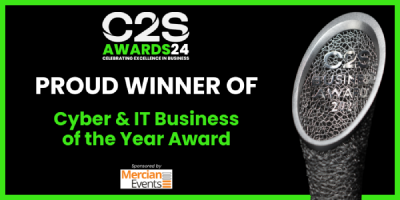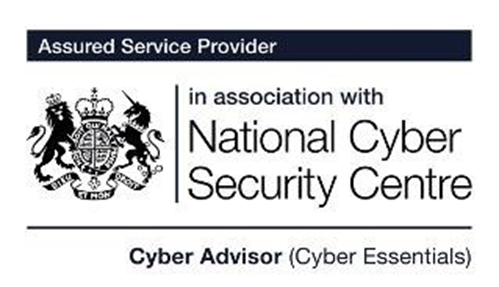Two-factor authentication (2FA) is an essential cyber security measure that can protect businesses from viruses, ransomware, and other attacks. Your cyber security consultancy service will confirm that 2FA can be a game-changer against these attacks, offering several benefits for businesses.
We’ll take a closer look at what 2FA is, its different kinds, and how it can help businesses stay safe online.
Two-factor Authentication (2FA)
Multifactor authentication (MFA) is a security process that uses multiple mutually exclusive authentication factors to establish a user’s true identity. Two-factor authentication uses two mutually exclusive elements to verify an account holder’s identity. A user will only receive access to the system after they provide two or more pieces of information that positively identify them.
The Importance of 2FA
If you use cyber security as a service, your provider more than likely recommends an extra layer of security that you can add to online accounts. Since It requires users to provide two pieces of evidence when logging in, such as a password and a code sent to their phone, it is much harder for attackers to gain access to accounts, even if they have stolen the password.
2FA is becoming increasingly common, especially for high-value accounts such as online banking or email. However, many businesses still aren’t using two-factor authentication, leaving them vulnerable to attacks.
A hacker can quickly access a system if they successfully trick users into giving them their credentials. They employ more complex phishing tactics to trick targets into disclosing sensitive information, such as passwords. Spear phishing attacks, for instance, are directed at C-suite executives and often incorporate publicly available data (like social media profiles) to appear more legitimate.
Types of 2FA
Two-factor authentication has three main categories:
| A Credential You Know | A credential You Have | Biometric Data |
| PasswordSecret PIN Number | Verification text, email, or callSecurity App or Token Smart Card | FingerprintVoice RecognitionFace Recognition |
There are several types of 2FA, but the most common are one-time passwords (OTPs) and time-based one-time passwords (TOTPs). Depending on your preferences or your business’s budget, your cyber security consultancy will recommend one of these 2FAs.
Special devices called hardware tokens create OTPs, while your cyber security support team will use software that generates TOTPs usually generated by a smartphone app.
2FA can be a nuisance for users, especially if they lose their phone or need to remember their password. However, users generally consider 2FA to be worth the inconvenience because it significantly increases security.
How 2FA Impacts Cyber Security
In the wake of high-profile cyber attacks such as WannaCry and NotPetya, businesses are increasingly turning to two-factor authentication (2FA) to protect their data. While 2FA is not foolproof for example, if an attacker obtains a user’s password and mobile device it can be a game-changer against specific attacks.
Two-factor authentication would likely have stopped WannaCry, as the malware only spread if users opened an infected email attachment without requiring additional authentication. In light of this attack, 2FA is now a non-negotiable component of your package if you outsource cyber security as a service.
There are, however, three ways that two-factor authentication impacts cybersecurity:
Two-Factor Authentication Provides An Added Layer of Security
Two-factor authentication can help prevent phishing attacks. This type of attack occurs when an attacker tries to trick a user into providing sensitive information, such as login credentials or banking information. By requiring a second factor, such as a code sent to a mobile device, businesses can make it much more difficult for attackers to successfully carry out this type of attack.
A hacker may be able to get a hold of a user’s username and password with enough coaxing, but they will only have access to the first factor of authentication. By adding a second factor, such as a fingerprint or code sent to a mobile device, businesses can make it much more difficult for attackers to access sensitive data.
Two-Factor Authentication Reduces Cyber Breaches By Hackers
Two-factor authentication (2FA) safeguards company systems and data against malicious users. There is a constant struggle between employers to get workers to use secure passwords and the frequent use of the number 123456 as the most popular password. A hacker may obtain access to a system by trying to log in with your employee’s email address as the username.
Two-factor authentication also helps prevent the dangerous use of the same password for several services, which would leave all of those accounts vulnerable in case of a single password hack.
Two-Factor Authentication Prevents Brute Force Attacks
Two-factor authentication is also helpful in preventing brute force assaults, in which an attacker uses a computer program to repeatedly try different combinations of a user’s username and password to get access. Two-factor authentication (2FA) prevents further activity by requiring an additional verification factor, as a code sent to a registered user that the hacker will not have.
Overall, 2FA can be a valuable tool in the fight against cybercrime. Depending on your industry, two-factor authentication is now a standard operating procedure, especially if you receive cyber security as a service.
How To Improve Two-factor Authentication (2FA)
The current major effort is transitioning away from SMS-based authentication across all cyber security support teams. A small number of third-party programs like Duo are currently addressing many of the security flaws in two-factor authentication. Additionally, more and more high-risk industries will use multifactor authentication (MFA), which calls for three separate pieces of information before granting access, such as a fingerprint and a set of security questions.
Adding a physical, hardware-based element is the best method to eliminate problems with two-factor authentication. Some businesses and government institutions are already making hardware-based authentication a prerequisite for granting access. In the not-too-distant future, we may all carry individualised authentication tokens in our pockets to swipe across our devices to log into services. While this may sound strange initially, in light of the massive increase in cyberattacks, it may prove to be the most effective solution.
Two-Factor Authentication Positively Impacts Cyber Security
2FA is the added layer of security all businesses and individuals need to protect their personal and customer information. The extra steps that OTPs, TOTPs, and biometric information require come in handy when it comes to deterring hackers from breaching your systems.
Optimising IT offers cyber security as a service, and we prioritise protecting our clients. We specialise in outsourcing IT tasks and the provision of cloud solution experts. Consulting, personnel training, system upgrades, and compliance inspections for cyber and physical networks are all part of our services. We also assist with any IT issues you may have and are specialists in the field. Contact us today.













